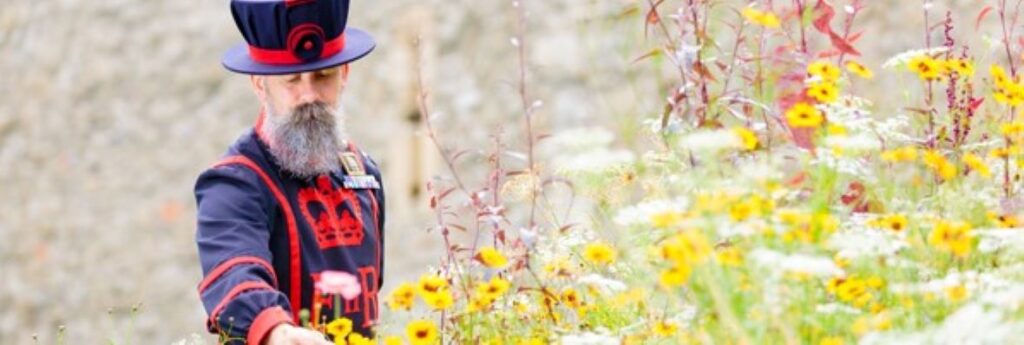Best known for its crown jewels and famous historic prisoners, not least some of the unlucky wives of Henry VIII, the Tower of London is set to present a new face this summer when it will be encircled by millions of flowers to help celebrate the Platinum Jubilee of Queen Elizabeth II.
This spring, 20 million carefully selected seeds will be sown in the Tower’s famous moat, creating a vibrant sea of flowers – dubbed “Superbloom” – which will continuously evolve from June to September, changing colours and patterns throughout the summer.
With a planting scheme designed to attract bees, pollinators and seed-eating birds, the display will provide a biodiverse space to support wildlife. Moreover, Superbloom will be the first stage of a permanent transformation of the famous moat into a new natural landscape in the heart of the City of London and which, for years to come, will be new habitat and green haven for pollinators, insects, and seed-eating birds.
In recent years, the vast 14,000-sq.-m. moat has been for been the setting for two major floral commemorations of the Centenary of the First World War: the 2014 ‘Poppies’ and 2018 ‘Flames’ installations.
However, the space has had many uses in its long history: it has housed a medieval orchard, a grazing ground for Victorian livestock, and even allotments during the Second World War. In 1977, to mark HM The Queen’s Silver Jubilee, the moat provided a fitting location for a garden display.
Now, almost half a century later, the moat will once again be the setting for the Tower’s jubilee tribute. For the first time, a space built in the 13th century to keep people out of the Tower, will welcome visitors in – from June, it will be open every day for visitors to explore and see the spectacle of the Superbloom close up.
The project was conceived by Historic Royal Palaces (HRP), the charity that cares for the Tower of London, and planned over several years, resulting in a design that will bring a burst of spectacular natural beauty to the Tower, while creating a significant new and much needed resource for pollinators and birds.
Early tests in Summer 2021 demonstrated the power of even a small number of flowers to increase the biodiversity in the moat. When the ‘Superbloom’ display ends in September, the new natural landscape created to support it will remain in the moat as a permanent Jubilee legacy.

An explosion of colour within London’s urban landscape, the Tower’s Superbloom will also celebrate the value of nature to our wellbeing. The positive impact of green space on health is widely recognized and the pandemic has highlighted its importance. Historic Royal Palaces hopes that the transformation of the moat – a previously underused space – will inspire similar positive change across the country. For example, schoolchildren are being invited to take part in a major initiative to support the project; growing their own displays, created from a special palette of seeds, to bloom alongside the one at the Tower – and learning about what gardens can do to improve sustainability and support ecology as part of that process.
Historic Royal Palaces also plans to host smaller floral displays across its other sites – including at Hampton Court Palace, Kensington Palace, and Hillsborough Castle, to mark the Jubilee.
Nigel Dunnett, Professor of Planting Design and Urban Horticulture at University of Sheffield, said, “We hope that the effect of being surrounded by a sea of colourful, sparkling, and vibrant flowers will release feelings of pure liberated joy in visitors to the Superbloom – it will be such a powerful, emotional, and celebratory experience. We’ve undertaken a lot of testing and trials to ensure that we deliver dramatic and beautiful impressionistic blends of colours, a long and continuous sequence of flowering, and a wonderful place for pollinating insects.’
The Superbloom began seeding in March and will run from June 1 to Sept. 18. Tickets on are sale now and pre-booking is essential. Packages include Tower and Superbloom, or just the latter. Click HERE.

